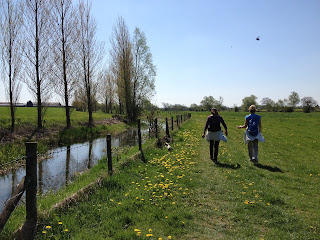Hampton Court to Chertsey-18th March
Anne, Jan, Theresa, Sally, Wendy
approximately 13km
We have now completed the 'London' section of the Thames Path and as spring continues to evade us, our walks continue in cold, windy and wintery conditions. We are now walking east out of London and the river is becoming more rural.
From Hampton Court station it was not long before the path became quite rural. Small islands dotted the river, each with their own local community.
A more rural river
Above, Garricks temple, the small domed building, was built in 1756 by the actor/manager David Garrick to celebrate the life of Shakespeare
Pleasure boats lined the river and occasionally, we could see great concrete blocks, remains of London's anti-tank defences.
A lock with a lovely hotel and homes on the opposite bank.
Swan feeding areas attract waterfowl and pigeons as well as swans.
The path leads to Walton on Thames. Unfortunately, the rare ferry crossing across the river and into Shepparton was not running and we detoured across the Walton Bridge and into Shepperton.
Lunch stop was the Thames Court pub on the river in Shepperton.
After lunch, we continued walking, passing a colourful river community of boats - the Rye Peck Meadow Moorings and through Dumsey Meadows (one of the few remaining traditional watermeadows on the river) and across the bridge into Chertsey, which has become a large commuter town and is one of the oldest recorded towns in the country.






































